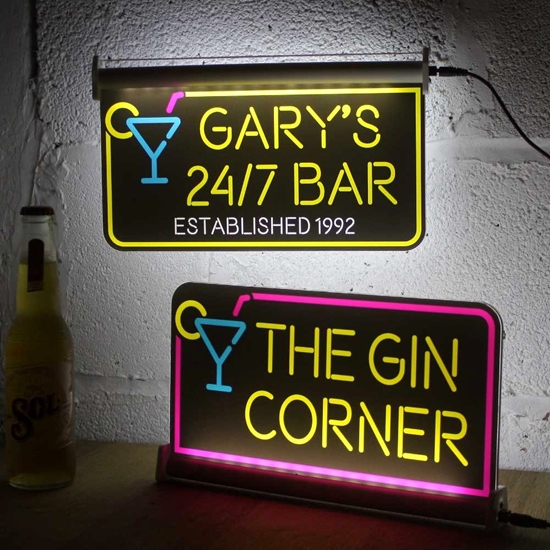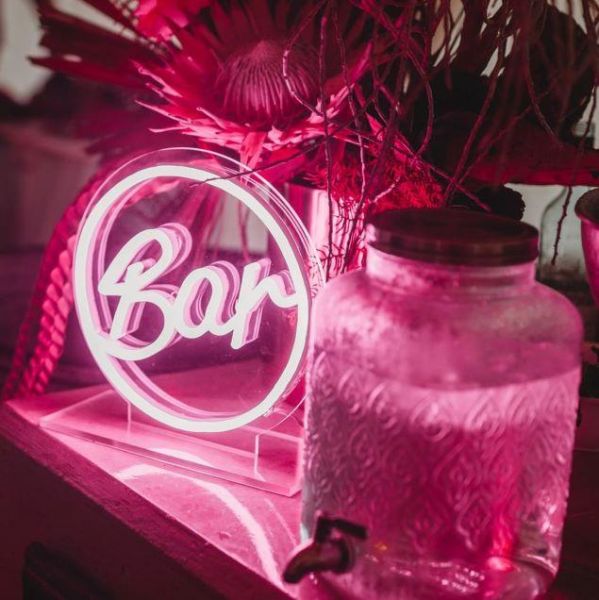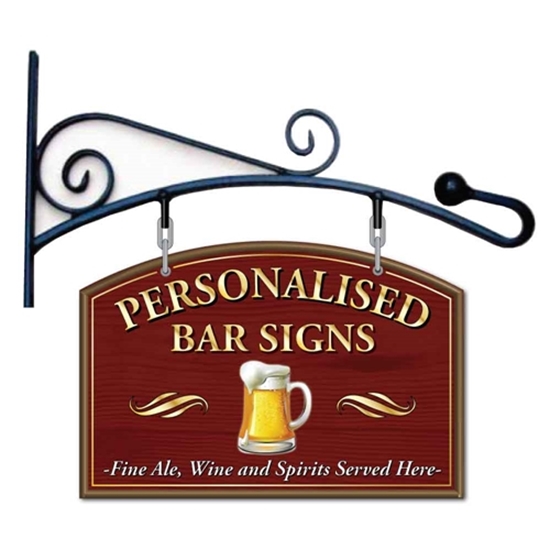Free Reasons To Selecting Bar Signs
Wiki Article
What Are The Differences Between Bar Signs In Relation To Their Location?
The placement of bar signposts is vital. They are constructed, placed and purposefully placed to be effective in certain areas. Here is a brief overview of how bar signs differ depending on where they are located: Exterior Signs
Purpose: To establish the bar and attract patrons.
Large, eye-catching and frequently lit at night.
Material: Sturdy materials such as neon vinyl, or weather resistant vinyl.
At the entrance, signs say Bar's name, logo, marquee, etc.
2. Entrance Signs
Begin by welcoming clients and providing the initial details.
Features: Clean and inviting, usually with branding elements.
Materials: Wood, metal or signs with lights.
Signs like "Welcome" or operating hours, and announcements about special events.
3. Interior Wall Signs
Purpose of the sign: to add style, convey information, and create a mood.
Features: Varying in size and design to complement interior decor.
Materials: Wood, metal, chalkboard, acrylic.
Examples of thematic decor signs menu boards, inspirational quotes.
4. Signs for Behind-the-Bar
The goal of this is to highlight the most important elements of the bar such as its name, signature cocktails and the latest specials.
Highlights: Brightly lit and well-lit It serves as a focal point.
Materials: LED, neon, chalkboard, or digital displays.
For instance, bars have name signs, drink-specials boards, or menus.
5. Signs for the ceiling and hanging
The purpose is to enhance the decoration or give instructions from above.
Suspended in the ceiling and is visible from different angles.
Materials: Lightweight material like foam board, metal or acrylic.
Some examples: Directional signs, hanging decorative signage, and themed products.
6. Tabletop Signs
Purpose: Provide details about the restaurant's services to customers at their tables.
Features A small size that is easily readable when viewed close.
Materials: wood paper, laminated papers, and acrylic.
Examples include drink menus, and table numbers. Promotional cards, QR codes and stands for promotions.
7. Restroom Signs
Use: To clearly define the exact location and the type of restrooms.
Most often, they are accompanied by very simple symbols and texts.
Materials: Metal, plastic, wood.
Signs for men's and woman's bathrooms, and signs for restrooms that are unisex.
8. Directions and signs
Guide patrons through various areas of the bar.
Easy to read labels and arrows.
Materials: Metal, acrylic, wood.
For instance, signs that point to bathrooms or exits.
9. Window Signs
Use to inform and draw passersby to the bar.
The features are visible on the outside. Most often, they include lighting.
Materials: Vinyl decals, neon, LED.
Examples: promotional signs and hours of operation and event announcements.
10. Promotional and Event Signs
Use: To inform clients about special occasions, seasonal promotions or other promotions.
Highlights: Catchy, and often only for a short time.
Materials: Foam board, vinyl, chalkboard.
For example: posters for events, promotional banners and chalkboard promotions.
Location-Specific Considerations
Visibility
Signage for entrances and exteriors: Signs must be visible from afar to attract customers.
Signs for the bar's interior and behind-the-bar: Should be strategically placed to maximize impact and readability.
Durability
Exterior Signs. Materials should be weatherproof.
Interior Signs may be constructed from various materials as they aren't exposed to elements.
Aesthetic Integration
Decorative and Behind-the-Bar Signs They should be a perfect complement to the bar's interior design and style.
Directional and Informational Signs: Must be functional, but still blend into the décor.
Functionality
Signs for directions and restrooms: These signs must be easily readable and clearly displayed to ensure that customers are able to find their way around the location.
Promoter and event signs should be temporary or changeable to reflect the current offers.
Lighting
Signs for windows and exteriors are illuminated to enhance visibility at night.
Interior as well as Behind the Bar signs: Use lighting to create ambience or highlight specific areas.
By adapting bar sign's layout, design, and even the materials to their exact locations the owners of bars can enhance the functionality as well as aesthetics of the establishment, creating an atmosphere that's both welcoming and cohesive. Take a look at the top home pub signs hints for website examples including bar signs for home bar, the staying inn sign, personalised cocktail bar sign, hanging pub signs for sale, garden bar signs, large pub sign, hanging home bar signs, pub signs made, pub signs for garden, garden bar signs and more.

What Are The Differences Between Bar Signs And Lighting?
The bar signs differ greatly when it comes to lighting. This affects their ambiance and visibility as well as overall impact. Here are some of the most significant ways lighting impacts bar signs. Neon Signs
Characteristics: Bright, colorful, classic.
Lighting: Uses neon gas-filled tubes that emit light when charged.
Uses: Great to create a retro vintage style. Most often used to create bar names and logos.
Benefits: It's very visible from a distance.
Advantages: They can be damaged and be costly to fix.
2. LED Signs
Characteristics: Energy-efficient, versatile, modern.
Lighting: Utilizes light emitting diodes (LEDs) to create brilliant and vivid light.
Uses : Outdoor and indoor signs are available and a display that can be programmed and lighting effects.
Benefits: Energy efficient and durable. The system can be programmed to change colours or even animations.
Advantages: May be costly at first, but it can be a great savings on maintenance and energy costs.
3. Backlit signs
Characteristics: Elegant, sophisticated, subtle.
Lighting Lights: LEDs or fluorescent lights behind a clear surface produce an ethereal glow.
Uses: Used for modern bar signage Menu boards and branding elements, for example.
Advantages Gives you an elegant, clean appearance and enhances reading in low light.
Advantages: More complicated installation and a higher initial cost.
4. Signs Edge-Lit
Characteristics: Sleek, contemporary, stylish.
Lighting: LEDs are employed to illuminate the edges of the acrylic sign panels.
Uses: Ideal for minimalist, modern designs. It is ideal for informational or directional signage.
Advantages: Creates a sophisticated and distinct look. It is energy efficient.
Advantages
5. Ambient/Accent Lighting
Characteristics: Subtle, atmospheric, decorative.
Lighting: Utilizes indirect lighting sources to emphasize or highlight indications.
Uses: Creates a calm ambience, and is frequently employed in conjunction with themed décor or art.
Benefits: It creates depth and ambience, and can create an inviting and cozy environment.
Advantages
6. Marquee Signs
Characteristics: Bold, theatrical, eye-catching.
Lighting: Use several LEDs or light bulbs around the perimeter of the sign.
Uses: Popular as exterior signage, for event promotion and to give a vintage look.
Advantages: Attractive and visible.
Cons: It is expensive and requires regular maintenance.
7. Projection signs
Characteristics: Dynamic, innovative, versatile.
Lighting: Projects images and light using projectors that are mounted on a flat surface.
Uses: It can be used for events and promotions that are temporary.
Benefits: No physical sign structure is required.
Negatives
8. Fluorescent Signs
Characteristics: Bright, cost-effective, traditional.
Lighting Tubes with fluorescent light sources are used to light.
Signs are used for both outdoor and indoor signs.
The vibrant colors and bright colors are perfect for large-scale signs, but they're also relatively cost-effective.
Cons: Not as energy efficient LEDs. Some LEDs produce a more harsh glow.
Things to Consider Regarding Lighting
Visibility
Neon and LED signposts: Excellent for grabbing your attention from an extended distance.
Signs with backlights and edge-lits can be used to improve the readability of your sign and also giving it a more elegant appearance.
Energy Efficiency
LED signs: Energy efficient and durable.
Neon and fluorescent signs are less energy efficient, with neon being more fragile.
Aesthetic Appeal
Neon and marquee signs: perfect for retro and vintage styles.
For clean, modern designs, edge-lit or backlit signs are the best choice.
Ambient Lighting: Helps create an ambiance that is more relaxing and inviting. ambience.
Maintenance
LED Signs: Low Maintenance and durable.
Neon & Fluorescent Signs require frequent maintenance and repair.
Cost
Signs with LED and Backlit Costs are higher upfront but lower operating costs
Fluorescent Signs: Less initial cost but higher long-term cost of energy.
Flexibility
Projection and Programmable Signs High flexibility in changing displays and dynamic content.
Traditional Signs Less flexible than other kinds of signs, but they provide an individualized look.
By choosing the right type of lighting for bar signs, bar owners can enhance their business's visibility, create the ideal atmosphere and effectively convey their business's image and promotion to patrons. Have a look at the most popular related site for website examples including personalised hanging bar sign, bar sign design, novelty bar signs, the pub sign, design your own bar sign, bar signs for home bar, personalised outdoor bar signs, pub signs personalised, personalised outdoor pub signs, pub sign hanging and more.

What Are The Main Differences Between Bar Signs And Maintenance?
The requirements for maintenance of bar signs will vary based on the elements like the type of material, lighting and location as well as the level of detail in the design. Here are a few ways bar signs can differ with regard to their maintenance. Material
Metal signs: They need very little maintenance. However, they will require cleaning periodically to get rid of dirt and other debris.
Wood signs: A regular inspection is needed for indications of warping, rot, or other damage. Sealing or staining may be required to ensure the appearance and durability.
Acrylic Signs are easy to clean with mild soap and water, they are resistant to the majority of chemicals.
Neon/LED sign: Requires periodic bulb replacement as well as examination of electrical components.
2. Lighting
Signs that are not illuminated: Typically easy to maintain, occasionally cleaning might be required to clean dust or dirt.
Illuminated Signs - Neon/LED: Periodic inspection is required of all lighting components (such as LED bulbs and LED modules) as well as cleaning or diffusers or lenses to ensure visibility.
3. Location
Signs for indoor use are generally more affordable to keep than outdoor signs as they are less exposed to the elements.
Outdoor signs could require more frequent care due to their exposure to the elements, UV radiations, and temperatures that fluctuate. To ensure that signs remain in good condition, frequent cleaning, inspection, and protection coats might be required.
4. Design Complexity
Simple signs: Simple designs that have fewer elements need less maintenance than complex or intricate designs that might have more parts susceptible to damage or dirt accumulation.
Digital Signs require regular maintenance, which includes updates to software, changes to content, and other technical changes to ensure proper functioning.
5. Mounting Installation
Secure mounting: Signs that are properly installed are less likely to require maintenance over time because of their movement or loss.
Poor Mounting: Signs that are not properly mounted or installed will require frequent maintenance to address problems like sagging or tilting.
6. Environmental Factors
Weather Exposure: Signs situated in areas that have excessive humidity, rain, or extreme temperatures may require more frequent maintenance to prevent corrosion, fading, or other forms of deterioration.
Pollution or debris Signs that are located in areas of industry or urbanization can collect dust, dirt or pollution. They require regular cleaning to ensure they remain visible and attractive.
7. Customization
Custom Signs - Signs that have intricate design, custom finishes, or special features require special maintenance to maintain appearance and functionality.
8. Frequency
Regular Maintenance. Establishing a schedule for regular cleanings, inspections, and maintenance can stop small issues from becoming major. This will ensure that your signs remain in good condition.
Signs need to be maintained when they are needed. This is to fix specific issues such as damage, wear, or malfunction.
Proper maintenance can bring you many advantages
Extended life span. Regular maintenance will help to extend the life of your signs and prevent the need for premature replacement.
An appropriately maintained sign will ensure its visibility, readability and efficiency when delivering messages to customers.
Cost savings Regular maintenance can save you from costly repairs and replacements in the future which will save you cash over the course of time.
Bar owners can improve the experience of customers and the overall ambience of their establishment by recognizing and complying with the maintenance requirements of various bar signs. See the most popular from this source about bar sign hanging for more examples including to the pub sign, personalised hanging pub signs, personalised home bar signs, hanging home bar signs, make a pub sign, hanging bar sign, make your own bar sign, garden pub signs, bar signs, pub signs and more.
